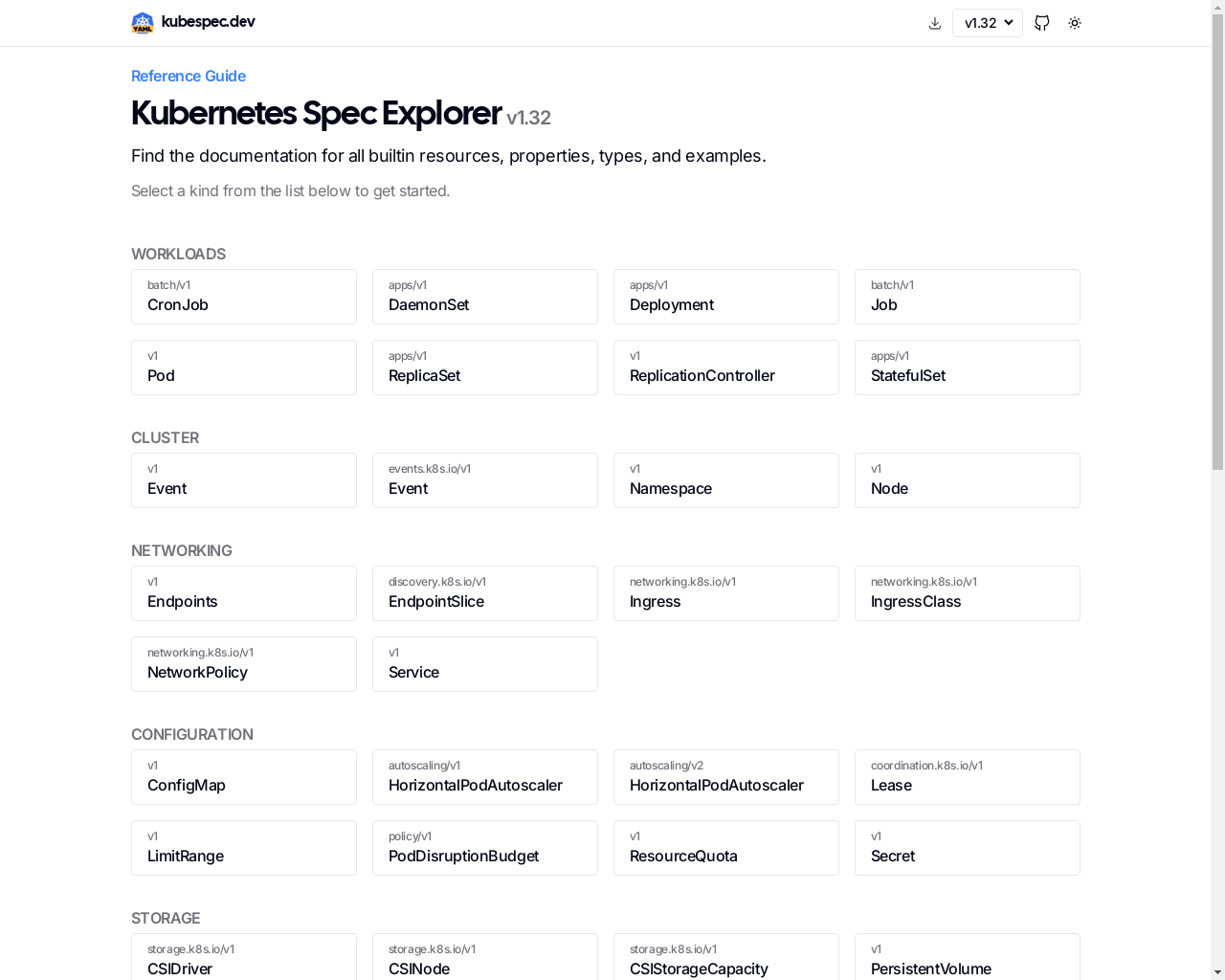

Highlight 1
The tree view structure makes it easy for users to explore and understand the complex relationships between Kubernetes resources.
Highlight 2
Providing a history of changes allows users to stay informed about version updates and modifications, aiding in smooth project migration.
Highlight 3
The inclusion of practical examples enhances user experience by enabling quick application of concepts without extensive coding.

Improvement 1
The app could benefit from improved search functionality, allowing users to quickly find specific resources or properties.
Improvement 2
Adding filters or sorting options in the tree view would enhance navigation, especially for users dealing with numerous resources.
Improvement 3
The introduction of a user feedback mechanism could help gather insights on how users are interacting with the platform and identify areas for future enhancements.
Product Functionality
Implement advanced search features and filtering options to help users quickly locate specific resources or attributes within the tool.
UI & UX
Enhance the overall user experience by simplifying navigation and including tooltips or inline help for clarity.
SEO or Marketing
Consider implementing an SEO strategy that includes keyword-rich descriptions, meta tags, and regular content updates to improve visibility in search engines.
MultiLanguage Support
Explore options for adding multi-language support so that users from different regions can access the content in their preferred language.
- 1
What versions of Kubernetes does KubeSpec support?
KubeSpec supports all Kubernetes versions since X, including the newly released version 1.32.
- 2
Can I copy example resources, and how do I do it?
Yes, you can easily copy example resources directly from the platform as a starting point for your own resource definitions.
- 3
Is there support for custom resources in KubeSpec?
Currently, KubeSpec focuses on native Kubernetes resources, but there are plans to add support for popular Custom Resource Definitions (CRD) in the future.
